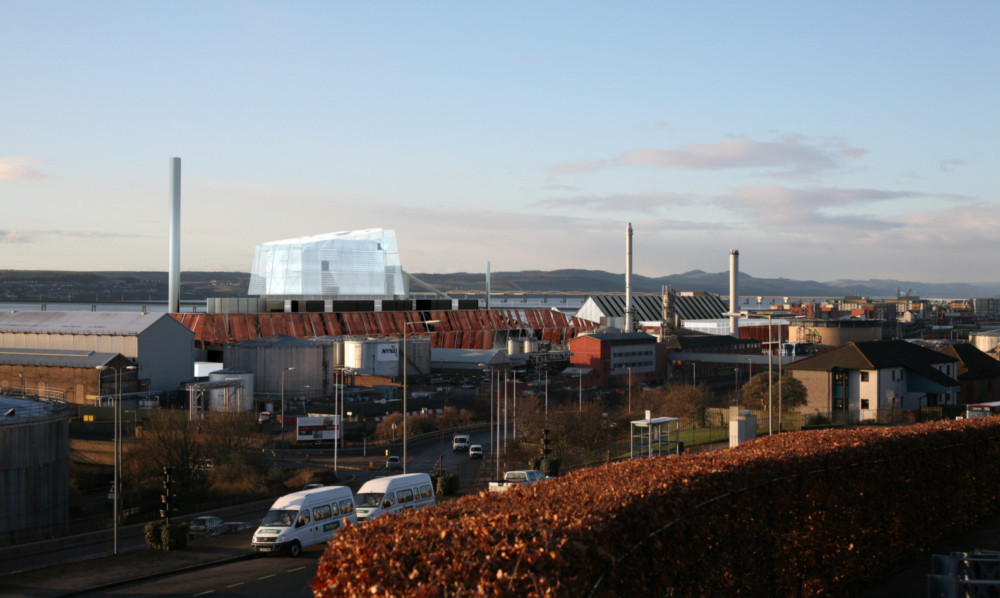The proposed Dundee biomass plant could have a customer right next door.
The Nynas UK refinery would be in the market for the heat produced by the £325 million renewable energy plant, if the price is right. Piping heat from the biomass facility to the refinery would be relatively simple as they would be neighbours in the east of the port.
Forth Energy says its giant biomass plant would provide enough electricity to meet the equivalent of 80% of Dundee’s needs and enough heat for six Ninewells Hospitals.
It also says it would produce a negligible amount of nitrogen dioxide pollution from its 90-metre high stack, and a tiny amount in comparison to the volume produced by passing road traffic
The Nynas UK refinery produces bitumen for asphalt surfacing. It needs heat to flow around its storage tanks to prevent the bitumen solidifying. That heat presently comes from the circulation of hot oil.
Stephen Lockhart, Nynas site manager, said he was aware that the proposed biomass plant would produce heat which would be offered to customers.
Asked if his company would be in the market to buy the heat, he said: “If the commercial terms are right, of course we would be interested.”
Such a deal could offer economic and environmental advantages. The former would come from lower operating costs and the latter from eliminating the need for the refinery to run its own system to heat oil to circulate round its tanks.
Mr Lockhart stressed there is no arrangement in place with Forth Energy to buy its heat, so the issue was hypothetical at this stage.
He added that his refinery has been given a grade of excellent for its environmental performance by the Scottish Environment Protection Agency, the body that will also licence the biomass if it is built.
The biomass plant’s 90-metre stack would be nearly twice the height of the tallest Nynas stack at 50 metres.
The biomass would not be the first power station generation plant at Dundee harbour. Carolina Port on virtually the same site was built first as a coal-fired and then an oil-fired power station in 1908 and demolished in 1984. Its tallest stack measured 110 metres and was higher than the proposed biomass stack.
* See images of the former Carolina Port station in Monday’s edition.
In that edition we will also publish names of some of our panellists to take part in The Courier’s debate on the biomass proposal.
